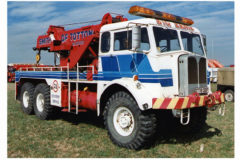Mercs on the Middle East run
Posted by Chris Graham on 30th May 2020
Pip Dunn provides a selection of interesting, period photographs the Mercedes-Benz press archive, depicting Mercs on the Middle East run.
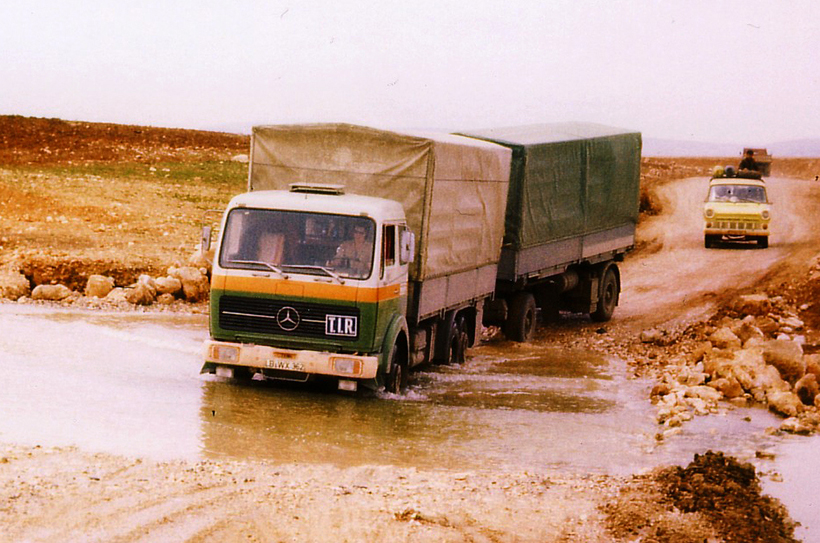
Mercs on the Middle East run: This 6×2, tag-axle drawbar unit – probably a 2232 – negotiates a stream.
Regular, overland runs from the UK and Europe to Middle East (ME) destinations started in the late 1960s, and really took off in the 1970s.Different operators had different preferences when it came to the vehicles they used, but one of the more popular marques to be seen plodding thousands of miles across the desert, was Mercedes-Benz. Mercs on the Middle East run were the sensible choice.
With their boxy, square cabs and small sleepers, the Mercedes LPS1624 – and its more powerful 1632 models – were frequently seen on the ME runs during the 1970s. They were liked because, when compared to many other trucks, they had more power and better cabs.
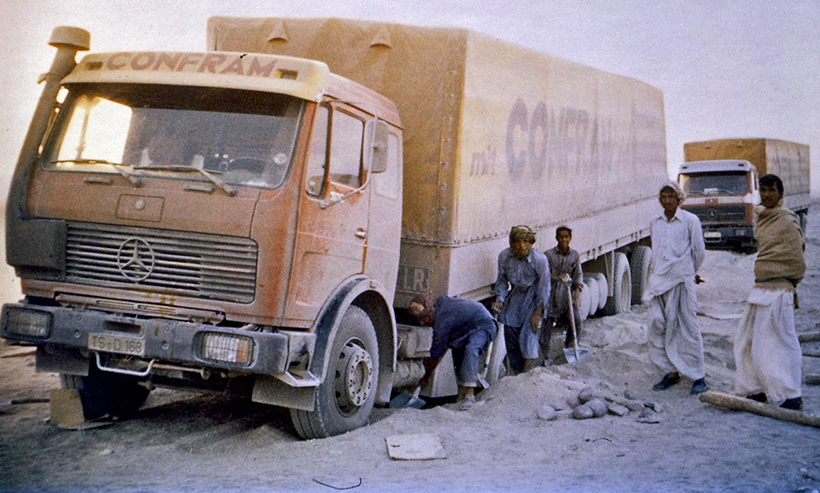
A 1632, on a long and difficult journey to Pakistan in the 1970s, has got stuck in the sand. The driver is relying on help from locals to get it dug out!
From 1973, the NG 1626 and 1632 models were introduced which had an even better cab – especially the L sleeper version – and were to become regulars on the run. Iconic UK haulier Astrans used some 1632s.
Like many manufacturers, such as DAF and Volvo, Mercedes-Benz offered bespoke ‘Middle east’ cabs, which included extra facilities for the drivers inside. These models had the air intake pipe mounted on the front of the cab, as opposed to behind it which was the norm on other trucks at the time.

To save fuel, tyres and driver fatigue on empty running, a 6×2 drawbar unit has been split, and its trailer is loaded on a similar unit while the truck is being loaded on to an artic.
The NG had three cab options, S (day), M (medium sleeper) and L (long sleeper), and all were seen in the desert. The late Gordon Pearce’s book Where is Shahawrah? recounts his exploits in a 6×6 2632 with a day cab, which he used on internal runs in the Gulf, but still had to sleep in!
Some drivers took the M-cabs on the ME runs so, despite having such limited room, it did allow a flat bunk and so offered a real benefit over a day cab – which, remarkably, some hauliers used in the early ME days!
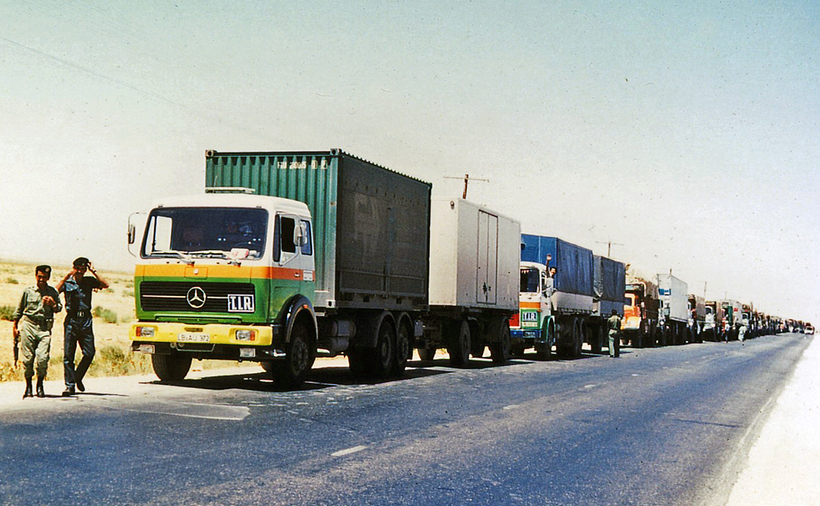
Long queues were part and parcel of the ME runs during the 1970s.
Many drivers on the ME runs would have liked the V10 1632 with – for the time – an impressive 320hp under the voluminous (by 1970s standards) cab. Mercs were not necessarily the fastest, or even the most economical, but they gained a reputation for being ultra-reliable and simple to work on if things went wrong. What’s more, there was a good knowledge of the models among mechanics out in the Gulf.
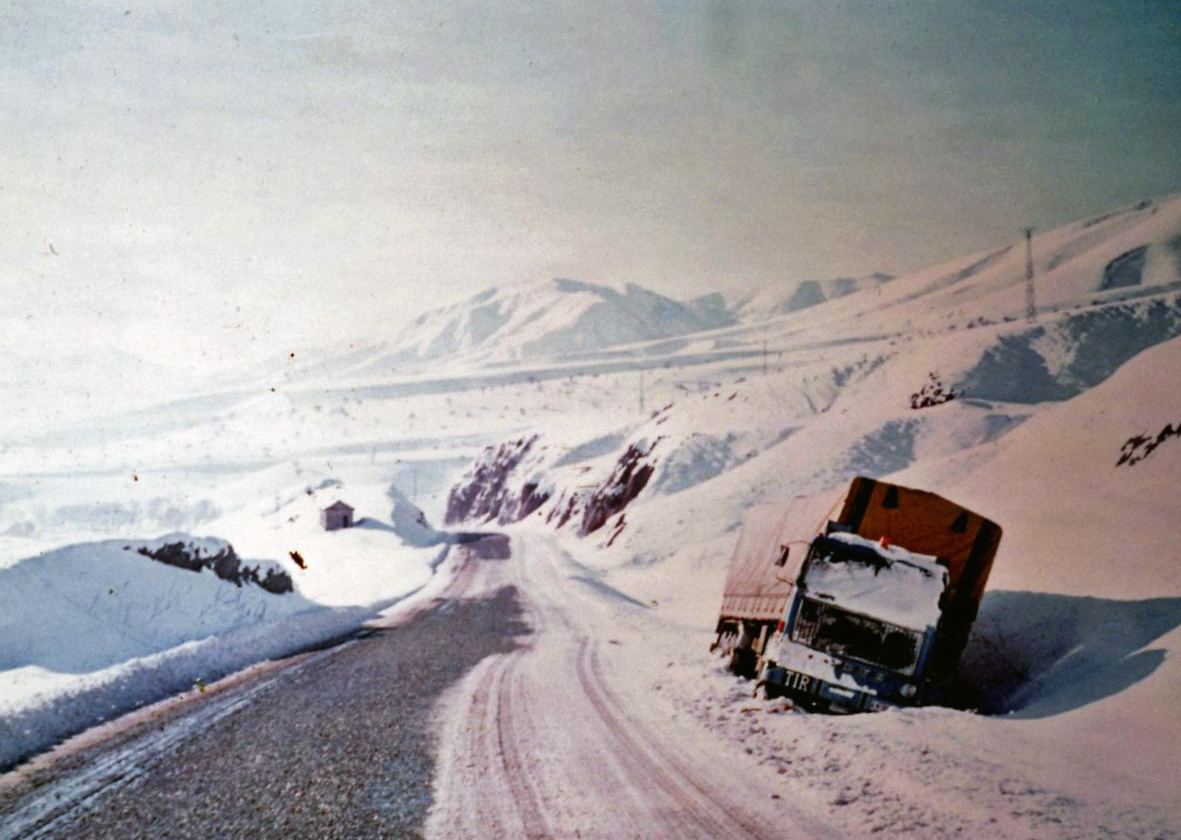
Bad weather was frequently encountered in the Turkish mountains, and many trucks slid off the road. This looks like a stricken Volvo F89.
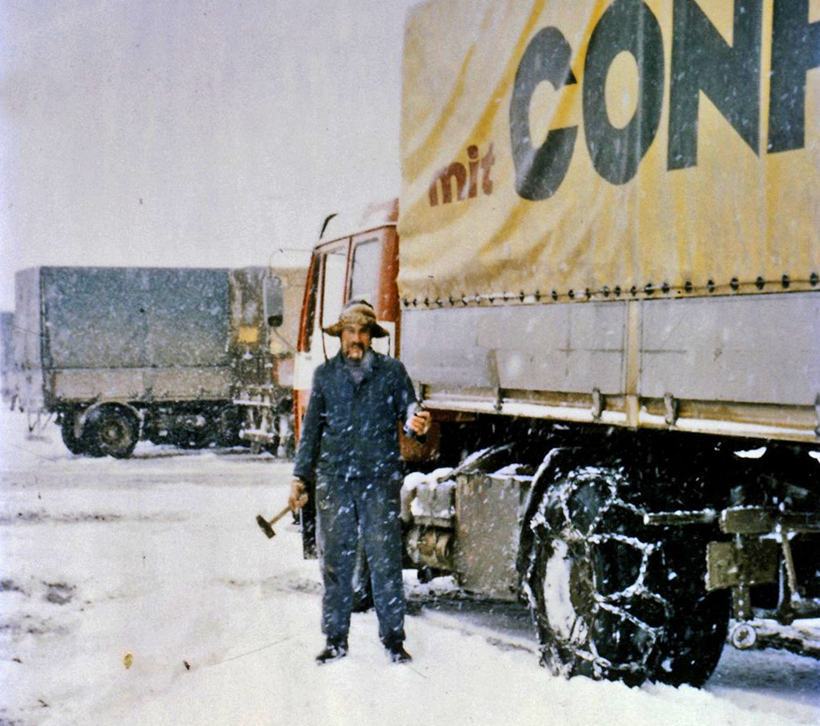
Snow chains were mandatory equipment for any serious haulier on the ME runs.
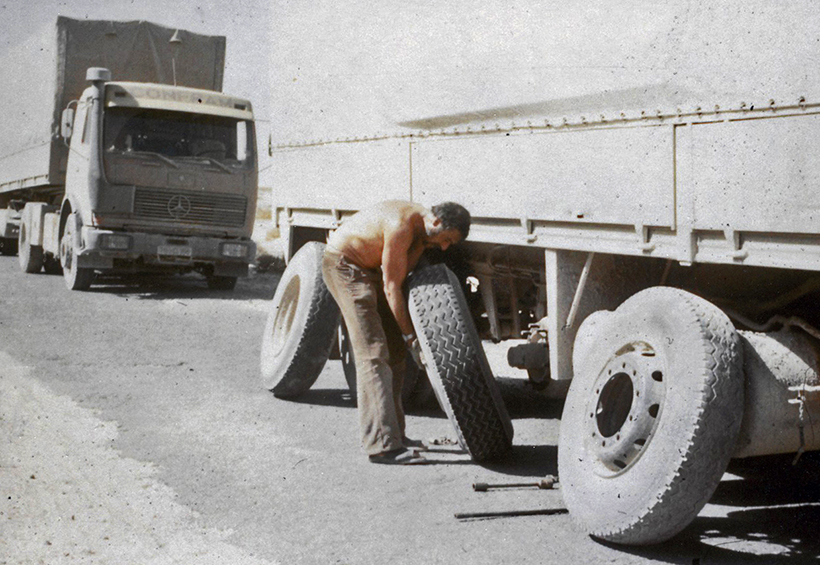
Roadside tyre changes in the soaring heat were no fun, but you couldn’t call out a tyre fitter to help!
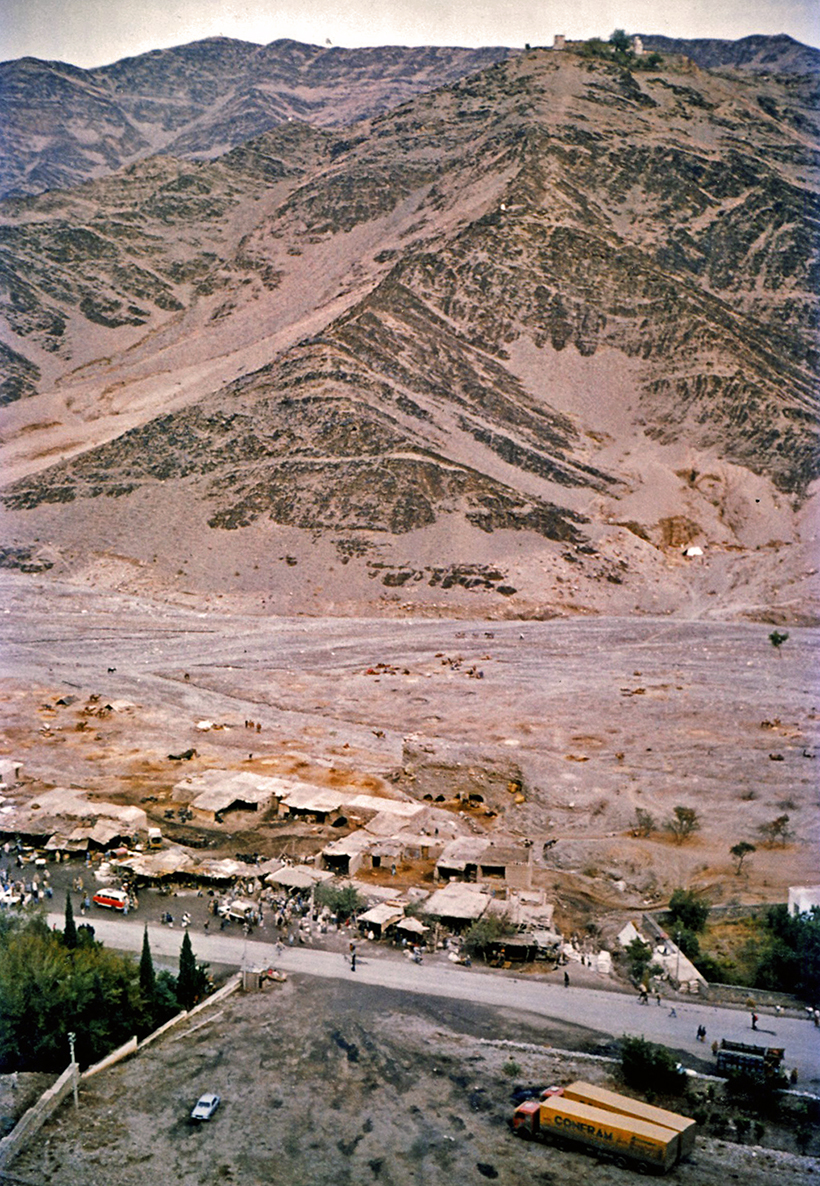
The terrain was challenging and villages few and far between, sometimes for hundreds of miles at a time.
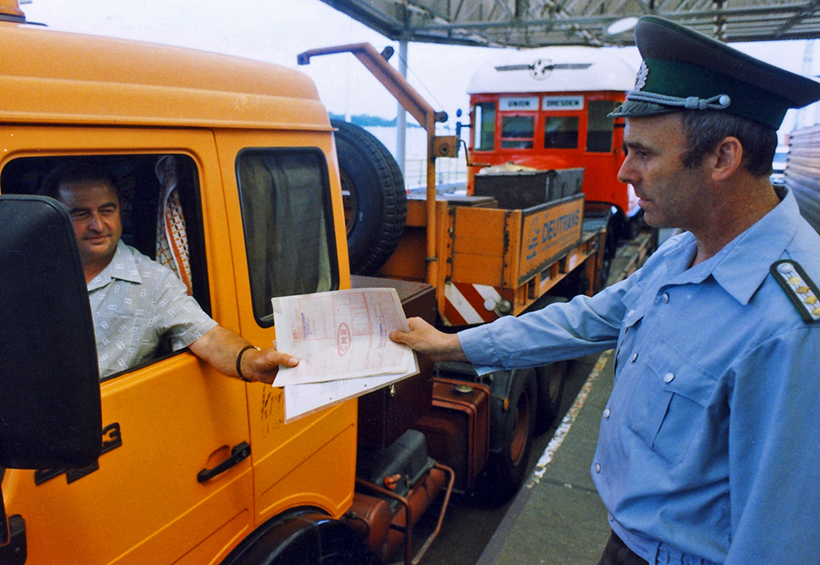
Woe betide those who didn’t have the correct paperwork!
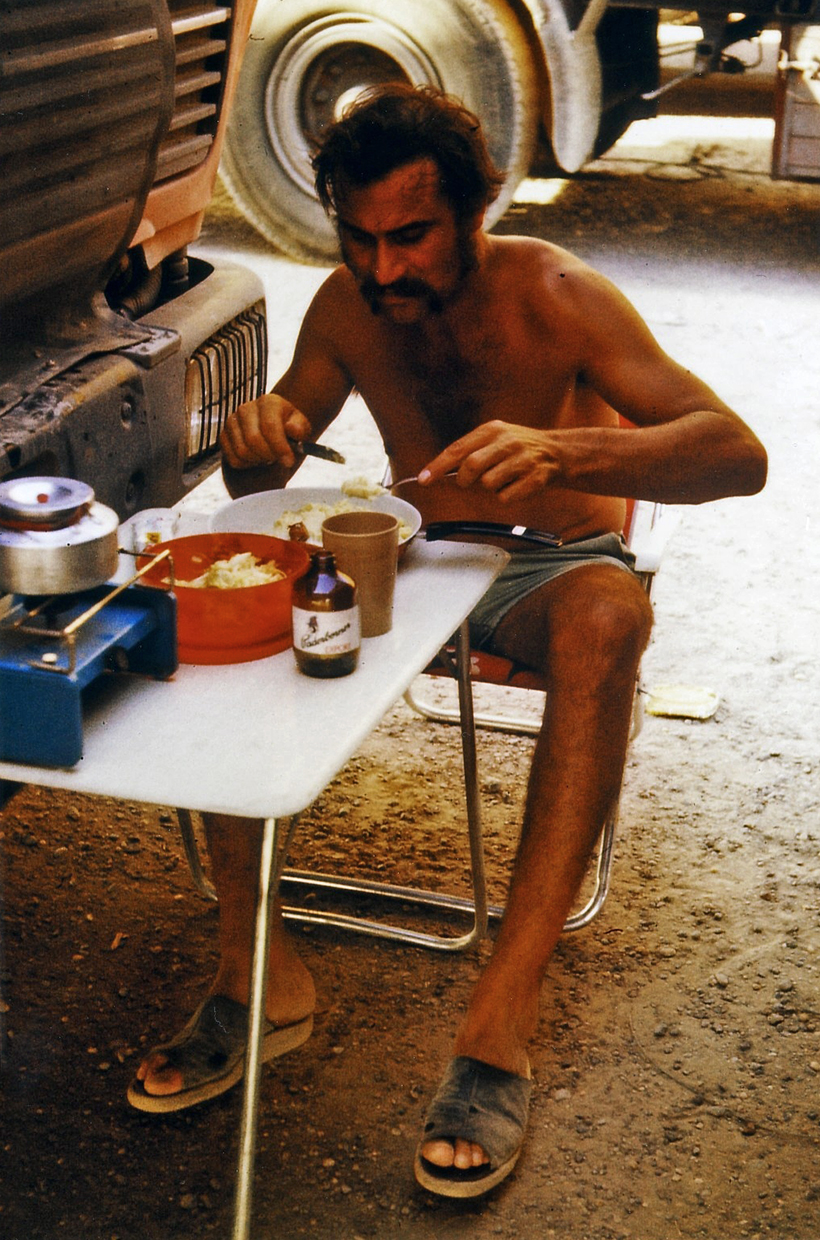
Cooking-up alongside the trailer was a daily ritual. The small gas stove was a life-saver for many an ME trucker.
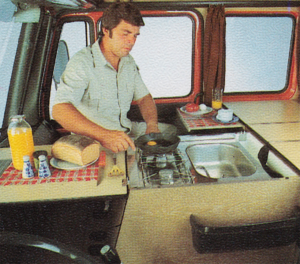
In the late 1970s, Mercedes-Benz developed its Intertransport cab for those doing long-distance runs, with the driver benefiting from additional storage and an in-built kitchen with a sink, two-burner stove and the passenger seat that can be converted to a kitchen seat.
To subscribe to any of Kelsey Publishing’s classic transport magazines, simply click here




